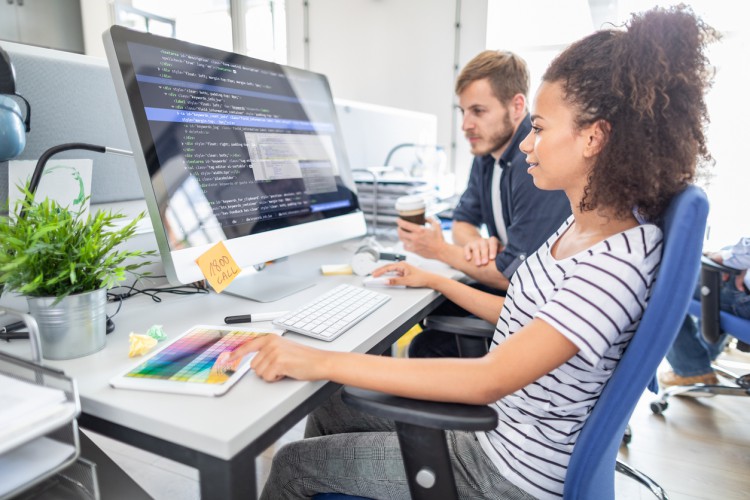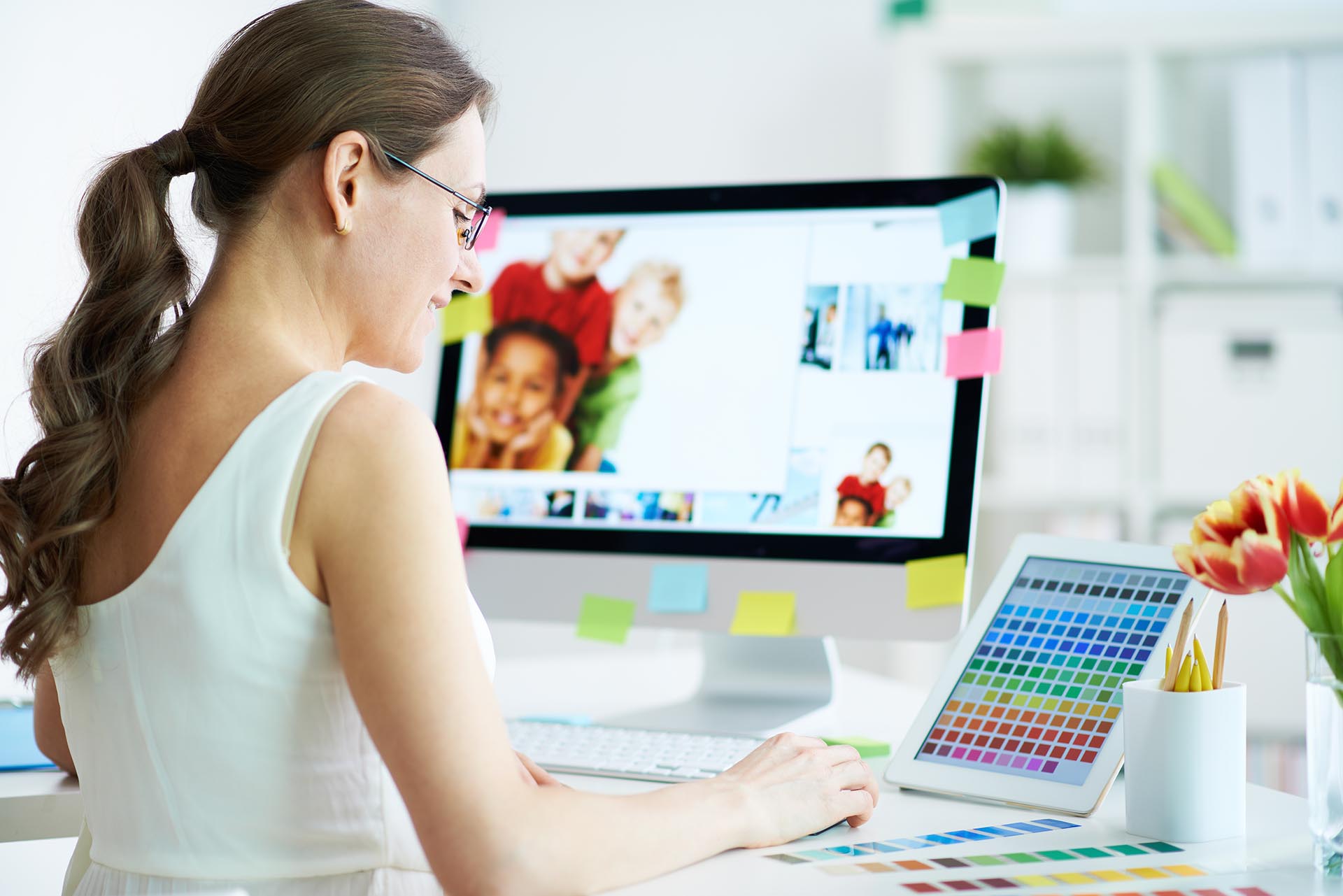Understand why responsive web design is key for modern user experience
Wiki Article
Checking Out the Different Kinds of Web Layout and Their Unique Benefits
The landscape of website design includes a range of designs, each offering distinct benefits that provide to various individual demands. Level and minimalist styles emphasize clarity, while responsive and material layouts boost flexibility across gadgets. Typography-driven and illustrative methods intend to increase interaction and emotional resonance. Understanding these diverse kinds can substantially impact user experience and brand name assumption. What exists beneath the surface of these style options?Minimal Website Design

Minimal Web style commonly incorporates a limited shade combination and simple typography, which not only improves aesthetic appeals however also enhances brand name identity. The reduced complexity can lead to much faster loading times, even more enhancing customer contentment. In addition, by decreasing aesthetic mess, users can involve with web content much more effectively, causing improved understanding and retention. Generally, minimalist Web layout cultivates a seamless customer experience, making it a prominent option for brand names aiming to communicate clearness and professionalism and trust in their on-line visibility.
Responsive Web Style
Receptive Web layout has ended up being vital in today's electronic landscape, ensuring mobile compatibility for customers across numerous tools. This approach significantly enhances customer experience by providing smooth navigation and availability, no matter screen size. As even more individuals access the Web on mobile phones and tablet computers, the significance of receptive layout remains to grow.
Mobile Compatibility Importance
As mobile tool use continues to increase, making sure sites are compatible with different screen sizes has actually come to be important for efficient interaction and involvement. Mobile compatibility, typically accomplished with responsive Web layout, allows web sites to adapt flawlessly to smart devices, tablets, and various other tools. This adaptability not just reaches a more comprehensive audience yet likewise enhances brand trustworthiness. A site that operates well on mobile phones shows professionalism and interest to customer needs. Furthermore, online search engine focus on mobile-friendly sites in their positions, making compatibility a critical factor for on-line exposure. By buying mobile compatibility, organizations can improve their electronic existence and satisfy the expanding number of customers who access information on the move. Focusing on mobile-responsive layout is essential in today's digital landscape.Improved Individual Experience

Apartment Design
Level design is a minimalist technique to website design that highlights simplicity and clearness. By eliminating three-dimensional components such as gradients, structures, and shadows, flat style creates an aesthetically attractive customer interface that prioritizes web content and functionality. This style promotes an instinctive navigating experience, as users can swiftly identify crucial functions and actions without interruption.One of the primary benefits of level design is its responsiveness across numerous gadgets and screen sizes. Its clean lines and uncomplicated formats adapt seamlessly, ensuring a constant experience for users on mobile, tablet, or desktop computer platforms. In addition, level layout commonly includes bold colors and typography, boosting visual impact and brand acknowledgment.
In addition, the simplicity inherent in flat layout leads to much faster packing times, which contributes favorably to individual complete satisfaction - branding. Generally, level style stays a popular choice for contemporary Web growth, straightening with contemporary visual choices while delivering exceptional usability
Material Layout
Material Design stands for a design language established by Google that focuses on producing a natural and instinctive user experience throughout digital systems. This strategy emphasizes using grid-based layouts, responsive animations, and deepness effects such as lights and darkness, which aid to develop a feeling of pecking order and spatial relationships. By mimicking the physical globe, Product Style permits users to communicate with electronic user interfaces in a more natural and appealing fashion.One of the essential advantages of Product Style is its versatility throughout different tools and display dimensions, ensuring a consistent experience for users. Additionally, it promotes a clear visual language that boosts use, making it less complicated for individuals to navigate intricate applications. The incorporation of vibrant colors and vibrant typography additionally plays a vital function in accentuating crucial elements, thereby boosting general customer interaction - branding. Consequently, Product Design has actually come to be a popular option amongst developers seeking to produce functional and visually enticing websites
Typography-Driven Style
Typography-Driven Layout concentrates on the calculated use kind to enhance the visual and useful elements of a web site. This layout technique prioritizes fonts, font dimensions, spacing, and power structure to produce visual passion and overview individual experience. By thoroughly choosing typography, developers can convey brand identification and evoke emotions, making the material more obtainable and engaging.Effective typography boosts readability and go to the website use, ensuring that individuals can easily browse the website and absorb information. The right mix of kind can also develop a clear visual pecking order, enabling customers to promptly recognize essential messages and contacts us to activity.
Moreover, a typography-driven strategy can be adjusted to numerous gadgets, ensuring uniformity throughout systems. This adaptability is crucial in today's multi-device landscape, where individual experience is paramount. Ultimately, Typography-Driven Style serves not just as an artistic choice but also as a functional aspect that considerably impacts a web site's effectiveness.
Illustratory Website Design
Illustrative Web style uses aesthetic narration strategies that can substantially improve individual engagement. By integrating distinct illustrations, internet sites can produce a memorable brand identification that resonates with their target market. This strategy not just captivates visitors however additionally communicates messages in an aesthetically engaging manner.Visual Storytelling Methods
A plethora of Web designers employ aesthetic storytelling strategies to produce interesting and immersive user experiences. This approach incorporates design, imagery, and typography to narrate a tale that reverberates with customers on an emotional degree. By integrating compelling visuals, developers can efficiently communicate messages and stimulate feelings, guiding site visitors through a brand name's trip. Infographics, animations, and interactive elements offer to boost narratives, making complicated info extra unforgettable and easily accessible. In addition, aesthetic narration can develop a natural brand identification, as regular imagery and styles reinforce core values and messages. Inevitably, this technique not only astounds customers but likewise cultivates a deeper connection with the web content, urging exploration and retention. Through skilled application, visual storytelling transforms common Web experiences right into vibrant and purposeful interactions.Enhancing User Engagement
Efficient Web layout considerably improves customer involvement by leveraging illustrative aspects that draw attention and foster interaction. Images can streamline complicated principles, making them extra friendly and unforgettable for customers. They damage the dullness of text-heavy web pages, producing visual breaks that welcome expedition. Additionally, unique illustrations can evoke feelings, encouraging individuals to get in touch with the web content on a deeper level. Interactive aspects, such as animations or hover effects, can likewise improve interaction by inviting individuals to take part actively as opposed to passively taking in details. This method not just keeps visitors on the website much longer you can try this out however also boosts the likelihood of return gos to. Eventually, efficient illustratory website design changes the individual experience, making it more satisfying and impactful.Branding With Picture
Aesthetic aspects play a considerable duty in forming a brand name's identification, and illustrations are a powerful device in this regard. Illustrative website design allows brand names to convey their special individuality and worths via personalized art work. This technique fosters a deeper psychological link with the audience, enhancing memorability and involvement. By incorporating images, brand names can differentiate themselves in a crowded industry, creating a distinct aesthetic narrative that resonates with their target group. Additionally, images can make and streamline intricate principles material a lot more obtainable, properly interacting messages in an appealing way. On the whole, branding through illustration not only improves the customer experience but likewise strengthens brand name acknowledgment, making it a valuable strategy for organizations intending to develop a strong online existence.Regularly Asked Inquiries
Just how Do I Select the Right Web Style Type for My Business?
To choose the right Web design kind for a service, one need to evaluate objectives, target audience, and market criteria. Examining customer experience and functionality will assist the choice procedure for excellent interaction and performance.What Devices Are Finest for Creating Various Web Design Designs?
Popular tools for creating varied Web layout styles consist of Adobe XD, Figma, Lay Out, and WordPress. Each offers special functions customized to various layout requirements, enabling designers to develop functional and aesthetically attractive sites efficiently.Just How Much Does Specialist Web Layout Usually Cost?
Professional website design usually costs in between $2,000 and $10,000, depending upon intricacy, features, and developer expertise. Personalized services and ongoing maintenance may raise costs, while themes can supply even more affordable choices for simpler jobs.browse around these guys
Can I Integrate Numerous Website Design Enters Successfully?
Yes, combining multiple website design types can be efficient. By incorporating elements from numerous designs, designers can develop one-of-a-kind, interesting individual experiences that deal with varied audiences while improving performance and aesthetic allure.
Just How Do Layout Trends Impact Individual Experience and Engagement?
Style trends significantly affect individual experience and engagement by boosting aesthetic allure, enhancing navigating, and fostering emotional connections - website design. Staying upgraded with fads allows developers to develop user-friendly interfaces that resonate with individuals and encourage extended interactionsMinimalist and flat styles emphasize clearness, while receptive and worldly layouts enhance versatility throughout tools. It might appear counterproductive, minimal Web layout emphasizes simplicity to boost customer experience. Responsive Web design plays a vital duty in enhancing user experience by guaranteeing that a site adjusts flawlessly to different screen sizes and tools. Flat design is a minimalist technique to Web layout that stresses simplicity and clarity. Product Design stands for a layout language developed by Google that concentrates on producing a cohesive and user-friendly individual experience across electronic platforms.
Report this wiki page